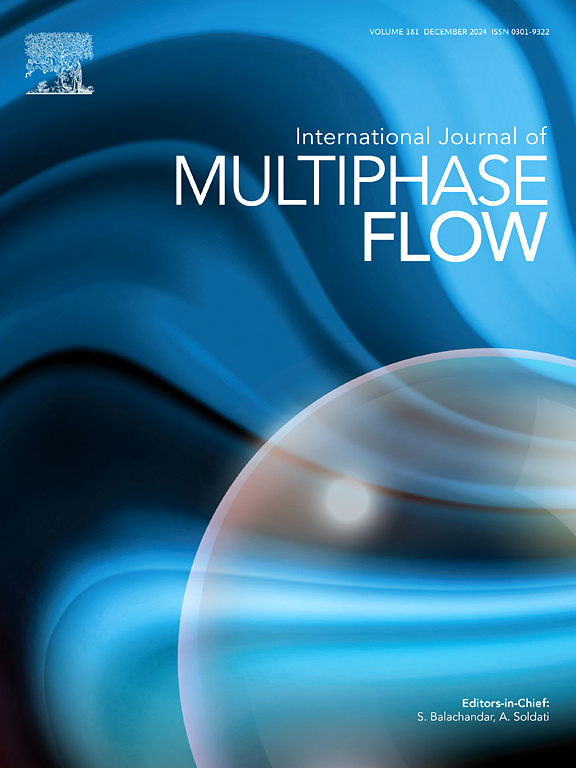Effect of the polymer viscosity and relaxation time on the Worthington jet produced by bubble bursting in weakly viscoelastic liquids
IF 3.6
2区 工程技术
Q1 MECHANICS
International Journal of Multiphase Flow
Pub Date : 2024-12-09
DOI:10.1016/j.ijmultiphaseflow.2024.105095
引用次数: 0
Abstract
We study the influence of bulk viscoelasticity on bubble bursting experimentally. We consider polymers with disparate molecular weights to analyze the effects of the polymer’s extensional relaxation time and viscosity separately. Within the parameter region explored in this study, the polymer relaxation time has a larger influence on whether a droplet is emitted or not, while the polymeric viscosity has the largest effect on the Worthington jet velocity. Viscoelasticity suppresses the droplet emission roughly if the characteristic strain rate of the Worthington jet exceeds the inverse of the polymer relaxation time. The viscosity of the polymer with the highest molecular weight is insufficient to produce noticeable effects on the Worthington jet dynamics for extensional relaxation times that lead to droplet ejection. This polymer transitions from a quasi-Newtonian behavior to droplet emission suppression as the polymer concentration increases. Polymeric viscosities mPa s significantly affect the Worthington jet dynamics. In this case, the strain rate arising in certain phases of the bubble bursting considerably increases the jet’s extensional viscosity. As a result, the first-emitted droplet size increases, and the velocity decreases.

求助全文
约1分钟内获得全文
求助全文
来源期刊
CiteScore
7.30
自引率
10.50%
发文量
244
审稿时长
4 months
期刊介绍:
The International Journal of Multiphase Flow publishes analytical, numerical and experimental articles of lasting interest. The scope of the journal includes all aspects of mass, momentum and energy exchange phenomena among different phases such as occur in disperse flows, gas–liquid and liquid–liquid flows, flows in porous media, boiling, granular flows and others.
The journal publishes full papers, brief communications and conference announcements.

 求助内容:
求助内容: 应助结果提醒方式:
应助结果提醒方式:


